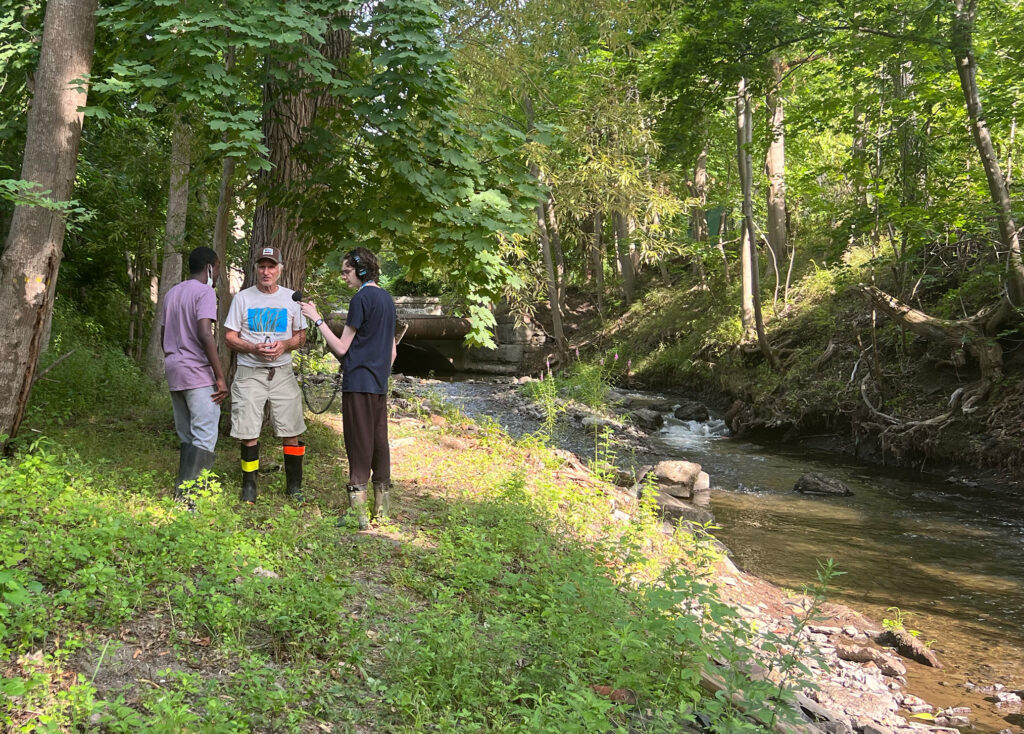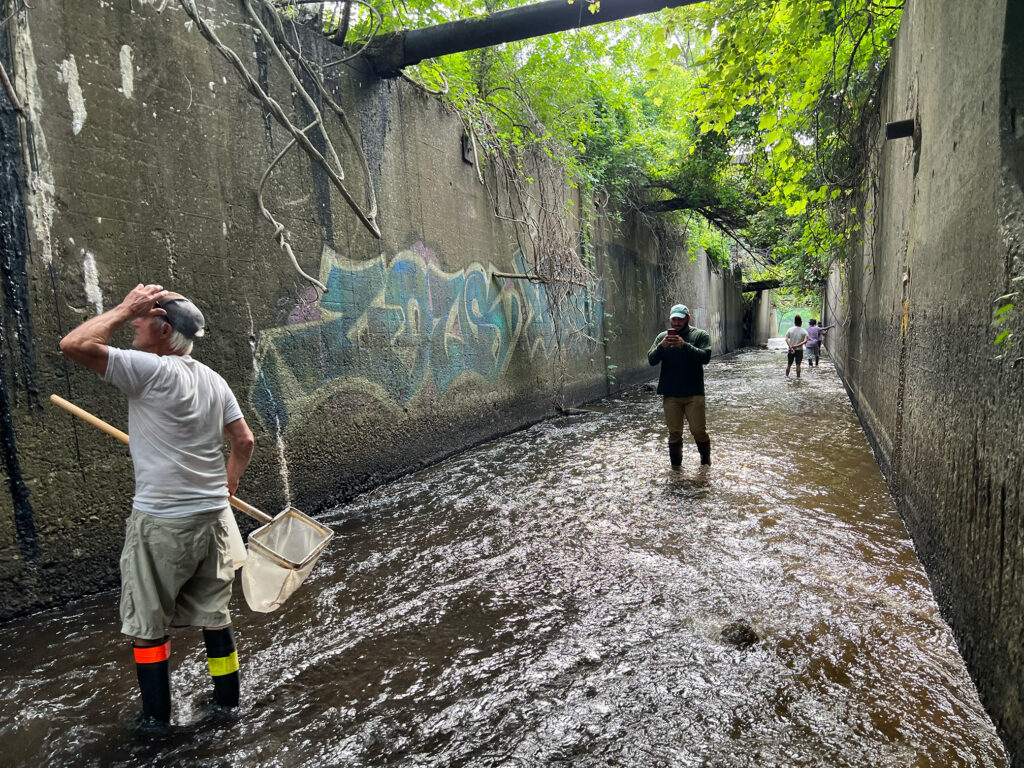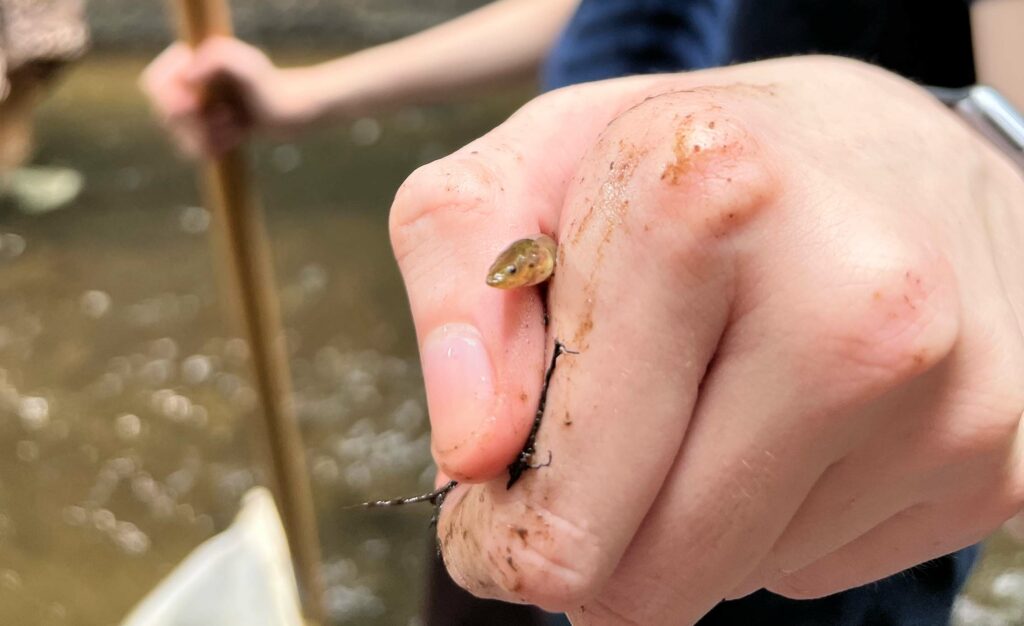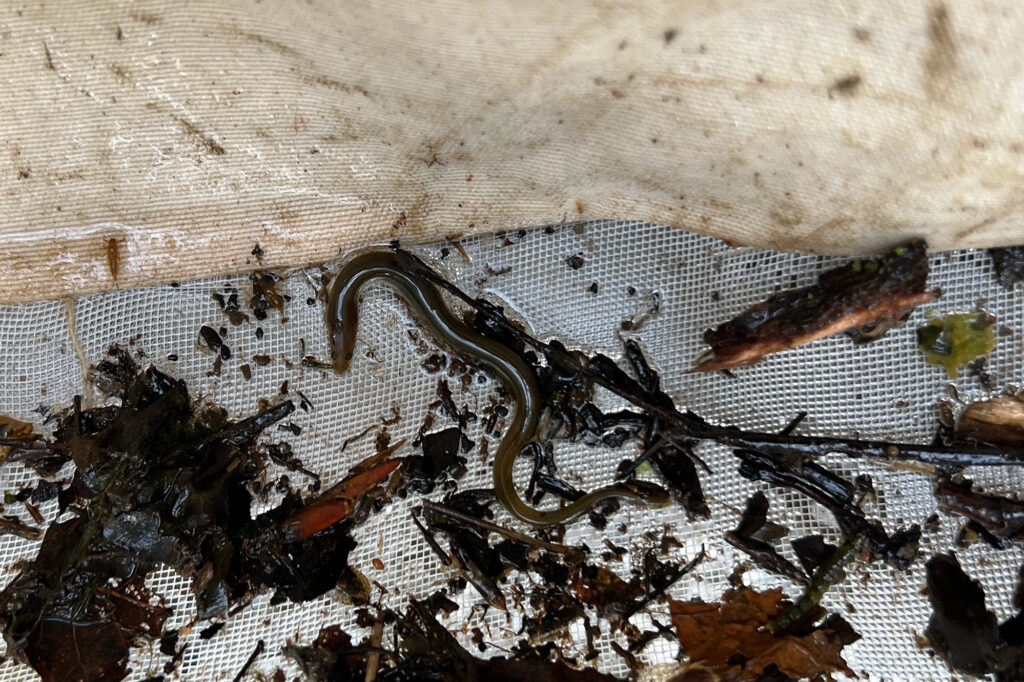For week four of Water Justice Summer Camp, youth fellows visited Wynants Kill Creek in South Troy with mentor Megan Lung of the Department of Environment Conservation Hudson River Estuary program and NEIWPCC. Megan joined us during our first week, and introduced us, via this DEC video, to the dam removal process that took place on the Wynants Kill near where it flows into the Hudson in South Troy.


As we learned during our site visit, the Wynants Kill flows into the Hudson in an area that has been heavily impacted by industry over several centuries. In addition to contaminating the soil in this area with heavy metals and petroleum products, resulting in brownfield status for much of land in this area (some being remediated now!), factories that needed water for their manufacturing processes modified the flow of the Wynantskill in a variety of ways. The last several hundred meters of the creek’s flow into the Hudson takes place in a concrete chute Megan described as a “taco”. This structure had a water intake pipe that drew water out of the creek, and a metal gate that functioned like a dam, raising the water level enough to draw it off through the pipe. After the factory that used the water intake pipe shut down in the early 20th century, the gate was left down for over eighty years, impacting the flow of the creek into the Hudson and preventing free flow between the Hudson and the creek. This stopped migratory fish, like alewife and American eels, from moving up the creek. The DEC removed the metal gate in 2016, and opened the flow up between the two water bodies.

As part of our fieldwork at this site, fellows worked with our macroinvertebrate mentor Doug Reed to sample macroinvertebrates in the rocky/rubble-filled substrate above the concrete chute and dam removal zone, and inside the concrete chute, where water flow was faster and rocky substrate (habitat) minimal. Fellows also took ambient audio samples with a handheld recorder, and interviewed Doug about his experience of the stream. We were delighted to find a range of macroinvertebrates that indicate decent water quality, including mayflies, caddisflies, and stoneflies. We also saw plenty of caddisfly cases on the bottom of the various anthropogenic (human-made) rock surfaces like metal slag, bricks, and concrete. But the most surprising and exciting creature we caught in our kick nets was not a macroinvertebrate at all, but rather a young American eel. Mentors who have worked with the Hudson River Eel project recognized the young eel as an elver who was likely 2-3 years old. After examining the young eel, who was several inches long and very wriggly, we returned them to the stream. How exciting to find a creature living in the Wynants Kill who couldn’t have made it past the metal gate in years past!

In addition to sampling macroinvertebtrates (and vertebrates!) and recording audio, fellows also talked with Megan about the implications of dam removal, including the environmental justice implications of communities living downstream from dangerous dams that might fail and cause flooding. In Troy, racial and class segregation create a situation in which poor and working class communities living in the flood plain, for example in South Troy, are both more vulnerable to flooding and have less resources to protect themselves from environmental threats and recover after them. We agreed that looking into the partial removal of the Mount Ida dam on the Poesten Kill, which was contentious, could be an interesting case study in the ecological, social, and political aspects of urban dam removal.
